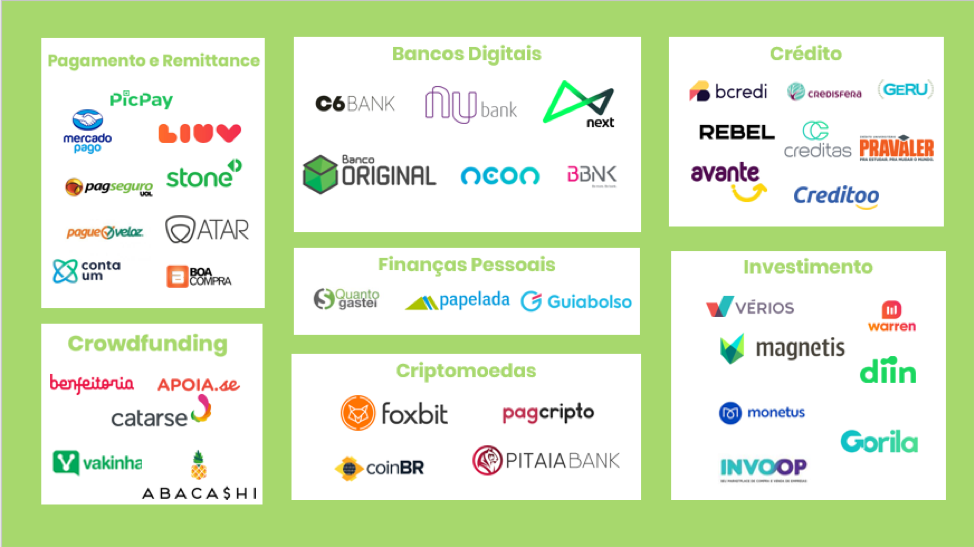NuBank – A Fintech Revolution in Latin America
- Marcelo Serafim
- Dec 13, 2023
- 3 min read
NuBank, a name synonymous with innovation and disruption in the banking sector, has emerged as one of Latin America's leading digital banks. Founded in 2013 by David Vélez, Cristina Junqueira, and Edward Wible, NuBank aimed to challenge the traditional banking system and offer a customer-centric, digital-first approach. With headquarters in São Paulo, Brazil, it has since expanded its operations across Latin America.
Early Days
The idea for NuBank was born out of frustration with the bureaucratic and costly banking system in Brazil. In its early days, NuBank focused on offering a no-fee, digital credit card, which was a novelty in the Brazilian market. The simplicity and convenience of their services quickly garnered a substantial customer base.
Expansion and Growth
Over the years, NuBank's product portfolio expanded to include a digital savings account, personal loans, and investment products. Its growth was fueled by significant investments from international venture capitalists. In 2018, NuBank achieved the status of a unicorn, a testament to its rapid growth and potential.
Technology and Innovation
At its core, NuBank leverages cutting-edge technology to streamline banking processes. Its use of artificial intelligence and machine learning for credit analysis and customer service set it apart in a market dominated by traditional banks.
Current Landscape
As of now, NuBank serves millions of customers across Brazil, Mexico, and Colombia. It is one of the largest digital banks globally by the number of customers. The bank's user-friendly app and customer-centric approach have been pivotal in its success.
Challenges and Competitions
Despite its growth, NuBank faces challenges. The increasing competition from both new fintech startups and traditional banks venturing into digital services poses a threat. Regulatory changes and economic uncertainties in Latin America also present potential hurdles.
Future Prospects
Looking ahead, NuBank is poised for further expansion. It aims to consolidate its presence in existing markets and explore new territories. The bank is also focusing on sustainable practices and financial education to deepen its societal impact.
Conclusion
NuBank's journey from a startup to a fintech powerhouse is a remarkable example of how innovation and customer focus can disrupt traditional industries. Its future, shaped by technological advancements and strategic expansion, looks promising.
Questions
Who were the founders of NuBank and when was it founded?
What was the first product offered by NuBank?
In which countries is NuBank currently operational?
What technological innovations does NuBank utilize?
What challenges does NuBank face in the current market?
How is NuBank different from traditional financial institutions?
Vocabulary Section
Fintech: Financial technology.
Disruption: A radical change in an industry.
Bureaucratic: Involving complicated rules and procedures.
Unicorn: A startup valued at over $1 billion.
Consolidate: Make something stronger or more solid.
Venturing: Attempt something risky or daring.
Regulatory: Relating to official rules or laws.
Hurdles: Obstacles or difficulties.
Pivotal: Of crucial importance.
Societal: Relating to society.
Phrasal Verb: "Branch Out"
Meaning: To expand or extend one's interests.
Examples:
"NuBank branched out from credit cards to savings accounts."
"The company is planning to branch out into new markets."
American Idiom: "Breaking the Bank"
Meaning: Spending all or a lot of money.
Example: "Switching to NuBank helped customers avoid breaking the bank with fees."
Grammar Tip: Punctuation
Punctuation marks are symbols that help organize and clarify written language. Here are some of the most common punctuation marks and their uses:
Period (.): Indicates the end of a declarative sentence or a statement.
Comma (,): Used to separate parts of a sentence, such as items in a list, clauses, or to indicate a pause.
Question Mark (?): Placed at the end of a sentence to denote a question.
Exclamation Point (!): Used to express strong emotion or emphasis.
Colon (:): Introduces a list, a quote, or an explanation; can also separate two independent clauses.
Semicolon (;): Links closely related independent clauses and can organize complex lists.
Quotation Marks (“ ”): Enclose direct speech, quotes, or titles of certain works.
Apostrophe (’): Indicates possession or the omission of letters in a contraction.
Hyphen (-): Joins words or parts of words, often used in compound terms.
Dash (—): Indicates a break in thought or a pause for emphasis, longer than a hyphen.
Parentheses ( ( ) ): Enclose additional information or clarifying details within a sentence.
Brackets [ ]: Used to include explanatory words or phrases within a quoted text.
Ellipsis (…): Indicates the omission of words or a trailing off of thought.
Each punctuation mark has specific rules and conventions for its use, which can vary slightly depending on the style guide or the language variant (e.g., American English vs. British English).
Listening
Homework Proposal
Research and Presentation: Conduct research on the impact of fintech companies like NuBank on traditional banking systems in Latin America. Prepare a presentation discussing the changes brought by these companies, their benefits to consumers, and challenges they face. Include case studies or examples.



Comments